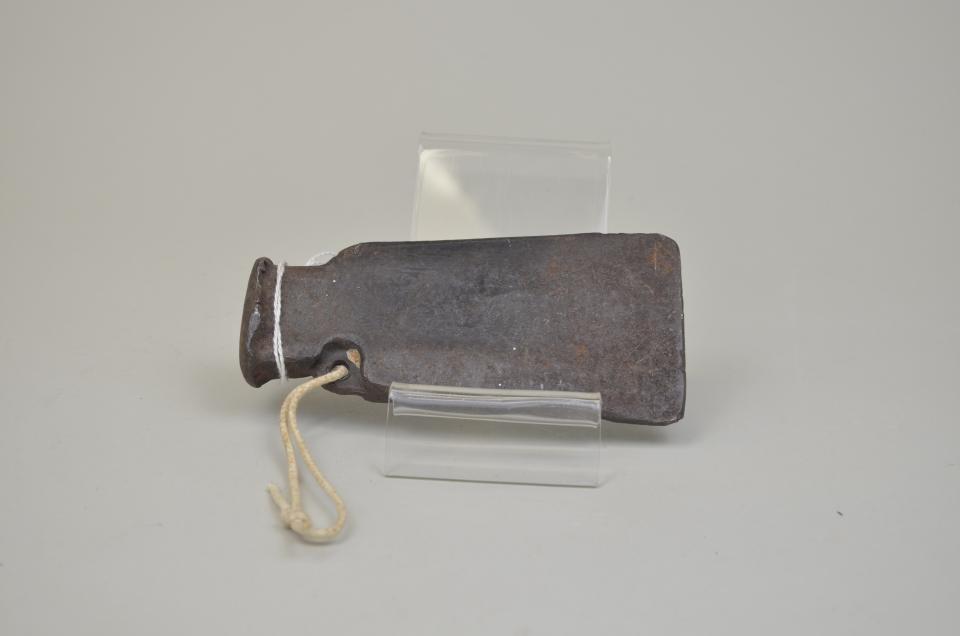
Length 13.9cm x Width 6.7cm x Height 2.7cm
A small ax head or unknown metal object with a thin angled edge and a wide base with a small hole (loop) for a piece of rope to go through to form a handle or carrying device. The base of the object has clearly been hammered or hit with another metal object numerous times as can be seen from the wear on the base and the 'mushrooming' of the metal edges curving down around the base.
Hand axes, of stone, and used without handles (hafts) were the first axes. They had knapped (chipped) cutting edges of flint or other stone. Early examples of hand axes date back to 1.6 mya in the later Oldowan, in Southern Ethiopia around 1.4 mya, and in 1.2 mya deposits in Olduvai Gorge. Stone axes made with ground cutting edges were first developed sometime in the late Pleistocene in Australia, where grind-edge axe fragments from sites in Arnhem Land date back at least 44,000 years; grind-edge axes were later invented independently in Japan some time around 38,000 BP, and are known from several Upper Palaeolithic sites on the islands of Honshu and Kyushu. In Europe, however, the innovation of grind edges occurred much later, in the Neolithic period ending 4,000 to 2,000 BC.
Hafted axes are first known from the Mesolithic period (c. 6000 BC). Few wooden hafts have been found from this period, but it seems that the axe was normally hafted by wedging. Birch-tar and rawhide lashings were used to fix the blade.
